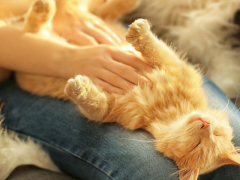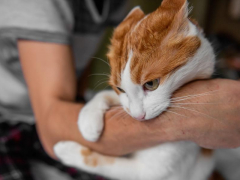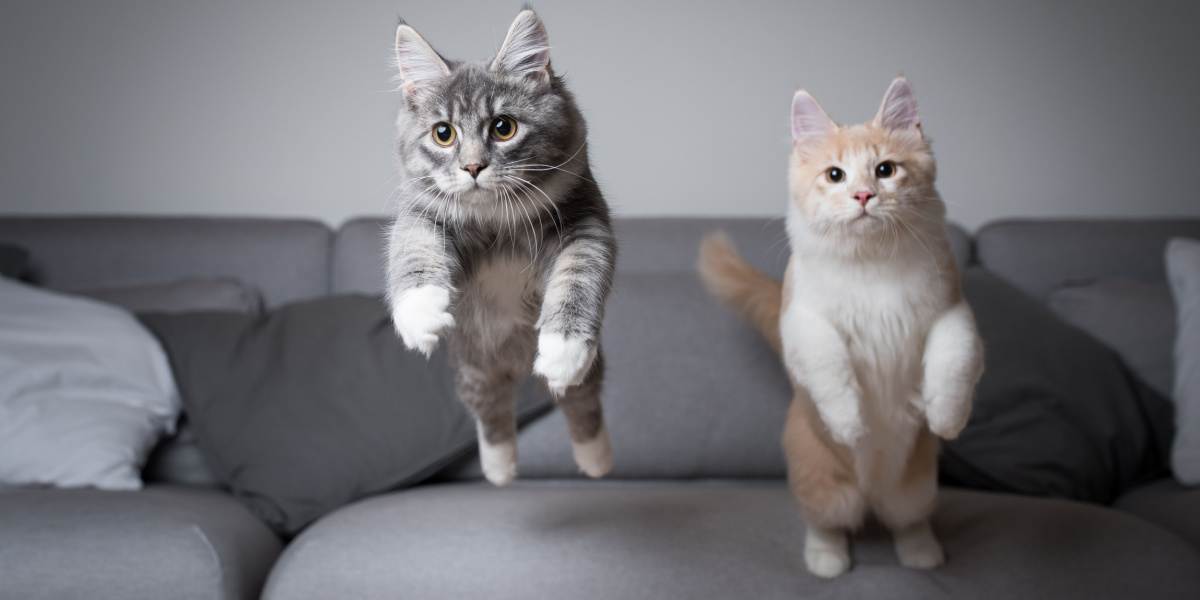
Shutterstock.com
You’ve probably heard that cats always land on their feet. Could that be true? And does it prevent them from getting injured when they fall? In this article, we’ll find out about a cat’s righting reflex and what you can do to keep your feline family members as safe as possible.
What Is a Cat’s Righting Reflex?
Human balance relies on the vestibular apparatus in our inner ear. This apparatus helps us know our orientation in our environment and which way is up. There are similar vestibular structures in your cat’s inner ear.
When a cat falls, they have an in-built rotation mechanism that maneuvers their body into a position where they are falling feet-first. This is known as the righting reflex and is only possible because of a cat’s unique skeletal structures.
A cat’s backbone is very flexible due to more mobile vertebrae. They also don’t have a fixed collarbone, which improves their ability to bend and rotate. The righting reflex helps to prevent injury by making them more likely to land on their feet or at least the right way up.
Does the Righting Reflex Stop Cats From Getting Hurt?
The righting reflex helps cats turn themselves as they fall but it’s not completely foolproof. The height and circumstances of the fall can also have an effect. While it’s very likely that a cat will land the right way up, regardless of the height that they fall from, they won’t always land on their feet. Even if they do, the force of the fall may be so great that the rest of their body makes contact with the ground too.
Although the righting reflex helps reduce the risk of damage to a cat’s head, neck, and spine, it sadly doesn’t prevent it altogether. Other injuries to the chin, nose, jaw, lungs, legs, teeth, and pelvis are common in cats who have fallen from a height. This is known as high-rise syndrome.
Soft Tissue Damage
Wounds and swelling of the chin, nose, gums, and tongue are common following a fall. If your cat has blood around their nose, mouth, or chin, it could be a sign that they’ve had a fall. Watch for facial swelling in your cat that could make their face look asymmetrical or an unusual shape, as this could indicate trauma.
Jaw Fracture
The lower jaw, or mandible, is weak where it forms a point below the lower incisors. This is known as the mandibular symphysis. It is weak because it is made of cartilage rather than bone. If your cat falls and hits their chin on the floor with some force, the mandible can fracture and separate at this point. To fix a fractured jaw, your vet may need to use wire to stabilize it.
Broken Teeth
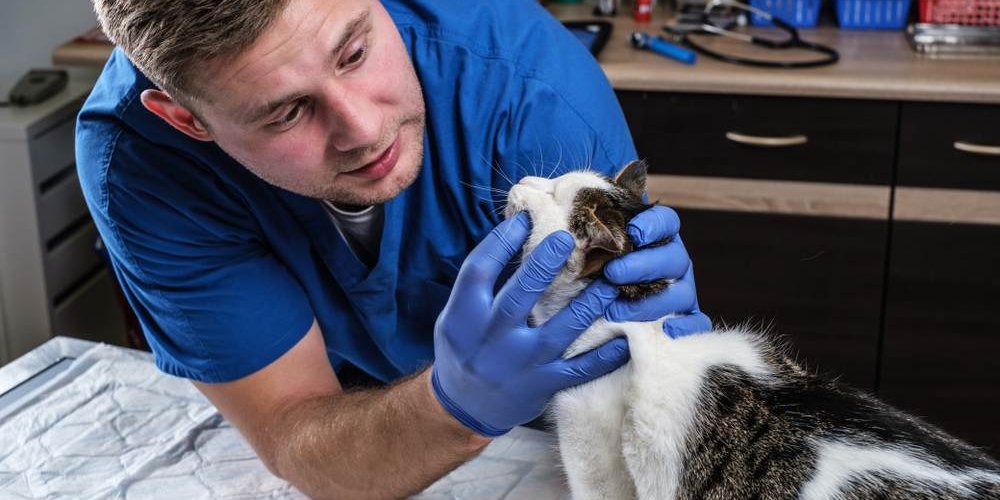
When cats don’t land on their feet from a very high fall, they can be seriously injured. Shutterstock.com
When a cat falls from a significant height, they may break one or more of their teeth. This is most commonly a canine tooth. You might not notice right away unless there is blood coming from your cat’s mouth or they are having trouble eating. If your cat has a fractured or chipped tooth, the vet will probably need to extract it to stop it from causing them pain.
Fractured Pelvis
Although less common than facial injuries, cats sometimes damage their pelvis when they fall. You might be surprised to hear that many cats will still walk with a fractured pelvis, depending on the extent of the injury.
A fractured pelvis in cats is sometimes accompanied by damage to the nerves that supply the legs, tail, or bladder. Most pelvic fractures will heal with strict cage rest for 4 to 6 weeks, although some require surgery.
Lung Damage
In response to a fall, your cat may develop difficulty breathing. This could be due to shock, but it could also be due to a minor lung puncture from a broken rib or bleeding. This causes fluid to gather in the chest cavity and prevents the lungs from expanding.
Broken Limbs
Because cats often land on their feet when falling, broken limbs are common. Fractured limbs in the front legs or back legs may require surgery. Seek veterinary care as soon as possible so you can make your cat comfortable.
How To Keep Your Cat Safe From Injuries
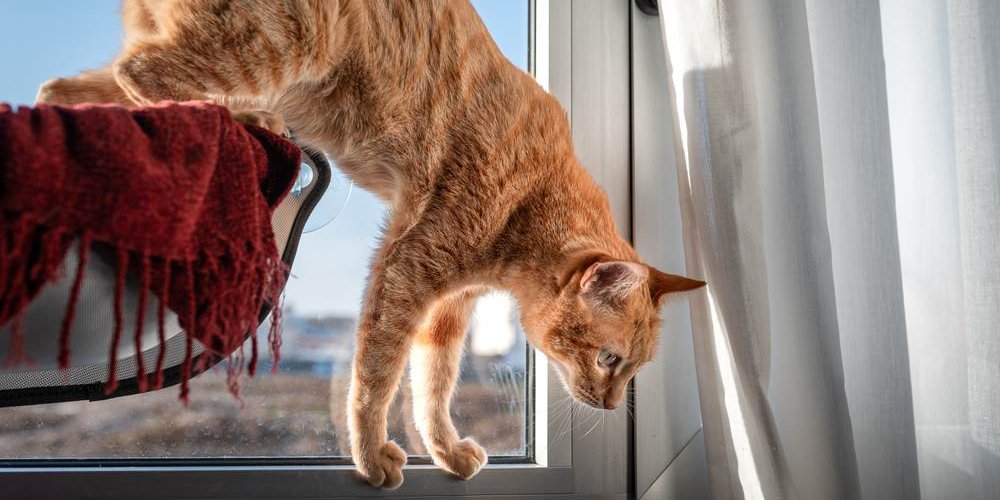
While cats are excellent climbers and can right themselves to land safely from many falls, they still need to be kept safe from very high falls. Shutterstock.com
Cats are independent creatures. It’s impossible to keep them completely safe while allowing them to enjoy a good quality of life. However, there are a few things you can do to try to keep your cat safe from a fall.
Keep all windows securely closed or on the latch so your cat can’t get out that way, even if they are spooked. Remember that screens do not keep pets safely inside—they are designed to pop out in an emergency. Similarly, if you have a balcony or rooftop access, don’t let your cat near it unsupervised. Tell everyone who comes into your home what your cat safety rules are.


